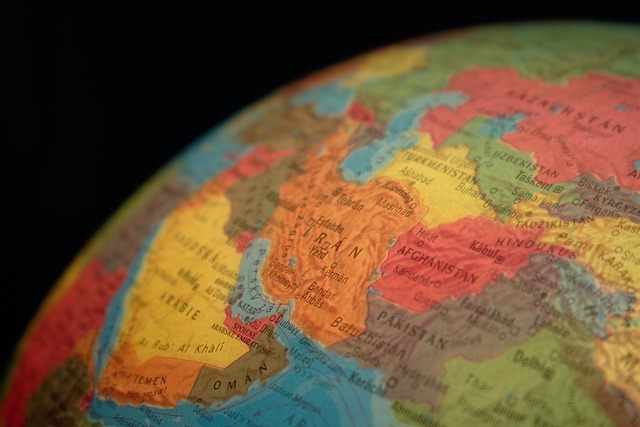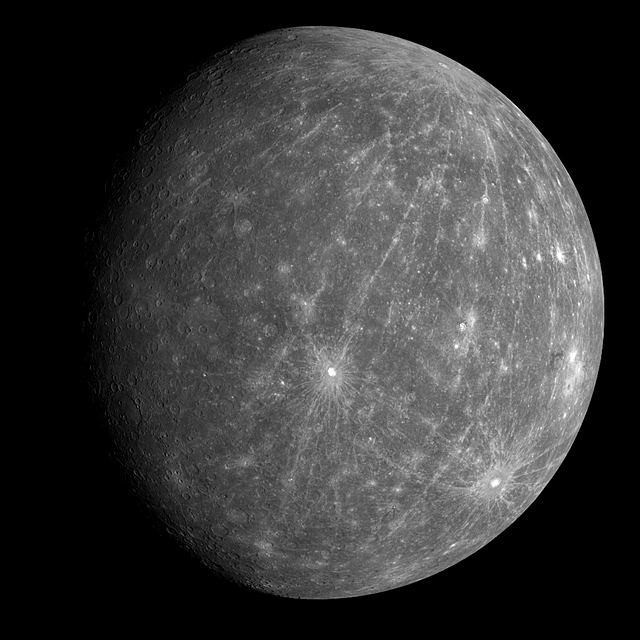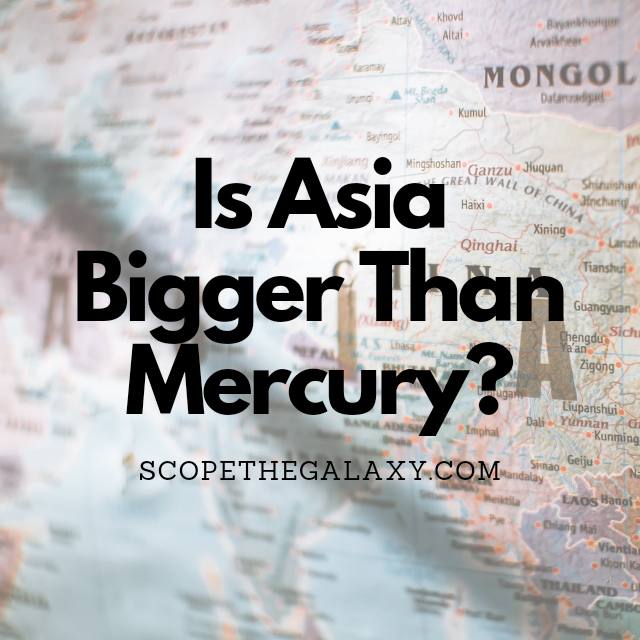*This post may contain affiliate links. This means we may make a commission if you purchase an item using one of our links*
Asia is the biggest continent on Earth with a surface area of 44,579,000 square kilometres whilst Mercury has a surface area of 74,797,000, square kilometres yet is the smallest planet in the solar system. The only manner in which Asia is bigger than Mercury is through its diameter where it is 11,000 km whilst Mercury has a diameter of 4,878km.
Still, there’s no comparison when it comes to size as one is a flat bed of land, and the other is a spherical planet. Continue reading as within this article I’ll be covering in which regard we could say Asia “is bigger” than Mercury, plus the facts and figures that put the actual size of these masses into perspective.
How Big Is The Continent of Asia?
Table of Contents

Asia is the biggest continent on Earth, covering an area of 44,579,000 square kilometers, equal to 30% of the total land area of Earth or 8.7% of the planet’s total surface area. Asia possesses the highest and lowest points on Earth’s surface, plus it has the longest coastline of any continent.
Asia contains two of the three largest countries in the world: Russia and China, and it holds roughly 60% of the world’s population, with around 4.7 billion people.
We can divide Asia into five major physical regions: mountain systems, plains and deserts, plateaus, saltwater areas, and freshwater environments. Among the most impressive geographic features of the continent are the Himalayas, which extend 2,500km across the Southeast and separate the Indian subcontinent from the rest of Asia.
The Himalayas cover over 612,000 square kilometers of land; they are so vast that they contain three different mountain belts: the Greater Himalayas, Lesser Himalayas, and Outer Himalayas. The Greater Himalayans possess the highest average elevation at 20,000 feet. It also contains nine of the world’s highest peaks, which are all over 26,000 feet tall.
Asia boasts the highest mountain in the world, Mount Everest, which stands at 29,032 feet. The continent also possesses several plateaus, including the vast Iranian plateau, which covers more than 3.6 million square kilometers.
Meanwhile, the West Siberian Plain of central Russia is one of the largest continuous flatlands in the world. This plain has a length of 2,400 kilometers and a width of 1,900 kilometers; over 50% of its total area is lower than 100 meters above sea level.
Asia extends to a length of 11,000km between the Arctic Circle and the Indian Ocean; its width of 8,500km stretches from the Ural Mountains to the Pacific Ocean.
Lastly, if we were to say that the average thickness of Asia’s crust fell around 40km, it would have a volume of 2.78 cubic kilometres. This makes it larger still and a significant amount more than all the other continents present on Earth.
How Big Is The Planet Mercury?

Mercury is the smallest planet in the Milky Way, with a diameter of 4,878km – around 57% of the diameter of Asia. At only two-fifths the size of Earth, Mercury is smaller than Ganymede and Titan.
This planet is a similar size to our moon and is only 58 million kilometers from the Sun, which means that the Sun would appear three times larger if we were standing on Mercury compared to standing on Earth. And because of this proximity, surface temperatures reach as high as 430 degrees Celsius during the day.
This rocky planet possesses an iron core that comprises a large part of the interior; it accounts for around three-quarters of Mercury’s diameter. Approximately 70% of Mercury’s weight is attributed to its iron, with the core a similar size to our moon. Atop the core sits a rocky mantle of approximately 55km in thickness.
The surface of Mercury is similar to that of our moon, with a number of impact craters caused by meteorite collisions. Some of the most significant impact basins include Caloris (with a diameter of 1,550km) and Rachmaninoff (with a diameter of 306km), created by early asteroid impacts.
Mercury has many areas of smooth terrain, along with cliffs that stretch for hundreds of kilometers and reach up to a mile into the sky. These cliffs were formed over billions of years as Mercury’s interior cooled and contracted.
And NASA’s research into these cliff-like landforms – or scarps – shows that Mercury continues to shrink. The size of the scarps displays their youth and suggests that Mercury is still tectonically active, just like Earth. As the interior continues to cool, the planet will continue to contract.
The surface area of Mercury is around 74,797,000 square kilometers, about 1.7 times the surface area of the Asian continent.
Furthermore, Mercury is spherical in shape so it’s overall volume would blow the value of any if not all continents on Earth, out of the water. This is because Mercury’s volume of 60.8 billion cubic kilometers makes it so their volume doesn’t even come close to the cubic measure of even the smallest planet in our solar system.
Are There Other Continents Bigger Than Mercury?
Asia is the biggest of Earth’s continents; while its diameter is near twice the size of Mercury, its surface area is far smaller.
The second largest continent, Africa, has a surface area of 30 million square kilometers but an impressive width of 7,400km, significantly larger than the diameter of Mercury. Meanwhile, the fifth largest continent, Antarctica, has an impressive width of 5,339km (slightly bigger than Mercury), though its surface area is much smaller, at around 14,200,000 square kilometers.
Summary
When we compare the diameter of Mercury to the width of several of Earth’s continents, we see that the land masses here on our planet are far broader than the smallest planet of the Milky Way. But while this helps us visualize Mercury’s width, it doesn’t represent the actual size. As a sphere, the surface area of Mercury is far greater than any of Earth’s continents.
References
Asia | Continent, Countries, Regions, Map, & Facts | Britannica
Asia: Physical Geography | National Geographic Society
How Big is Mercury? The Size Is Changing and Here’s Why | Space
What is Mercury made of? | Cool Cosmos (caltech.edu)
In Depth | Mercury – NASA Solar System Exploration

